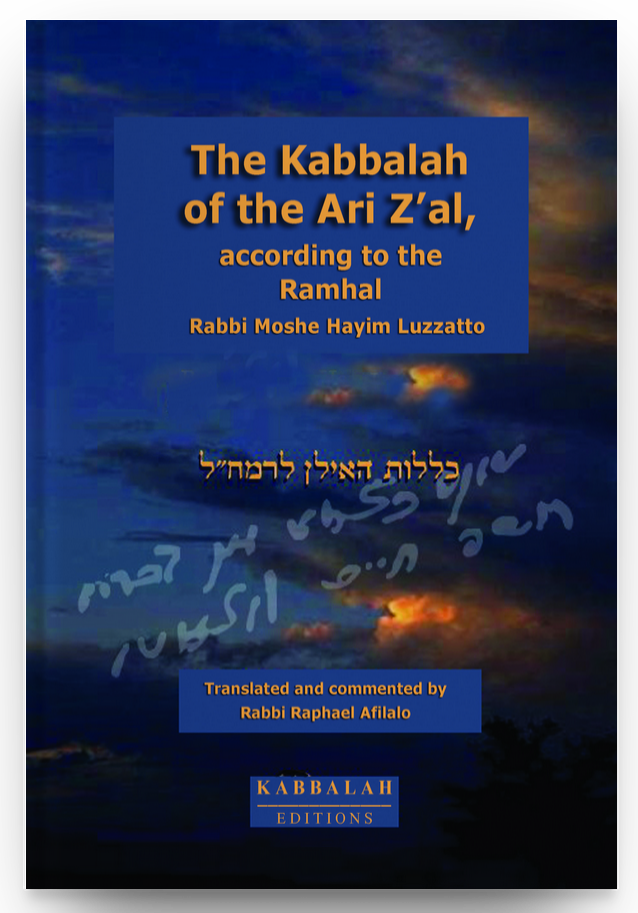About Kabbalah
The Kabbalah is the mystical and esoteric explanation of the Torah. It teaches the unfolding of the worlds, the various ways of guidance of these worlds, the role of man in the creation, the will of the Creator and more. No other writings explain in details; the creation of this world and the ones above it, the lights or energies that influence its guidance, nor the final goal of everything. These writings are based on ancient Jewish texts and mostly on the Zohar.
The Kabbalah teaches us that the world is guided by an extremely complex system of forces or lights, which through their interactions provoke chain reactions that impact directly on man and the worlds. Each one of these reactions has numerous ramifications, with many details and results. It explains to us the true guidance of the world, so that we may understand the will of G-od. How and why He created the world, in what way He governs it, the provenance of the souls and angels, the purpose of the existence of evil, the reasons for the dualism of reward and punishment, etc.
The word Kabbalah comes from the verb Lekabel (to receive), but to receive it is first necessary to want, and to become a Keli (recipient) able to receive and contain this knowledge. The Kabbalah also demonstrates to us the importance of man, because only he, by getting closer to the Creator, can influence these incredible forces. For this, one has to elevate to a higher dimension of understanding, and start asking himself some very important questions like; “Why”, “What is the purpose of doing this act or this prayer”, “What are the outcomes of my actions” etc.
The other writings explain in the least details “how” to do, but only the Zohar and the Kabbalah explain to us the exact reasons, and effects of all our prayers and actions.
Kabbalah Concepts
The study of Kabbalah involves a good comprehension of its general idea,
as well as its concepts. Here is a sample of some main concepts.
For more info visit: www.kabbalah5.com
Sur la Kabbalah
La Kabbalah est l'explication mystique et ésotérique de la Torah. Elle enseigne le déploiement des mondes, les diverses sortes de direction de ces mondes, le rôle de l'homme dans la création, la volonté du Créateur et plus encore. Aucun autre écrit n'explique en détails la création de ce monde et de ceux au-dessus de lui, les lumières ou énergies qui influencent sa direction, ni l'objectif final de tout. Ces écrits sont basés sur d’anciens textes juifs et principalement sur le Zohar.
La Kabbalah nous enseigne que le monde est guidé par un système extrêmement complexe de forces ou lumières, qui par leurs interactions provoquent des réactions en chaîne qui influent directement sur l'homme et les mondes. Chacune de ces réactions a de nombreuses ramifications, avec beaucoup de détails et résultats. Elle nous explique la véritable direction du monde, afin que nous puissions comprendre la volonté de D.. Comment et pourquoi Il a créé le monde, de quelle manière Il le dirige, la provenance des âmes et des anges, le but de l'existence du mal, les raisons du dualisme de récompense et punition, etc.
Le mot Kabbalah provient du verbe Lekabel (recevoir), mais pour recevoir il est d'abord nécessaire de vouloir, et de devenir un Kéli (récipient) capable de recevoir et de contenir cette connaissance. La Kabbalah nous démontre également l'importance de l'homme, car seulement lui, en se rapprochant de son créateur, peut influencer ces incroyables forces. Pour cela, il faut s’élever à une dimension plus haute de compréhension, et commencer à se poser certaines questions très importantes tel que ; « Pourquoi », « quel est le but de faire cet acte ou cette prière », « quels sont les résultats de mes actions » etc








